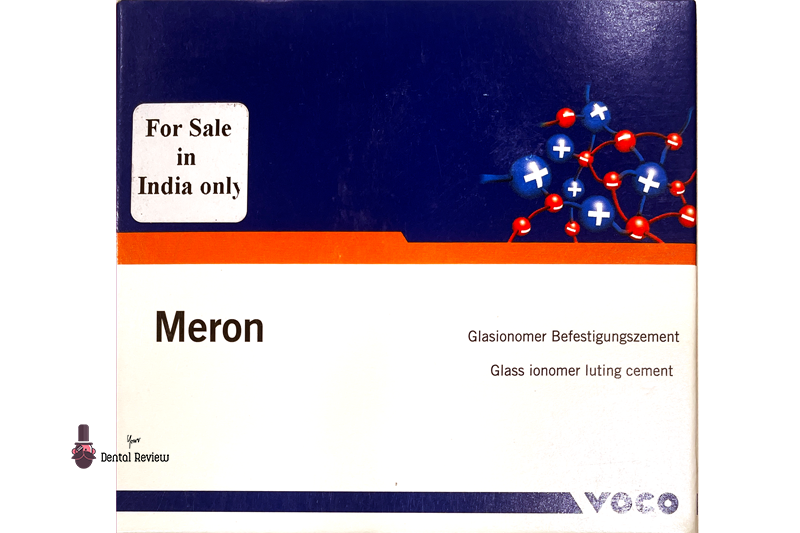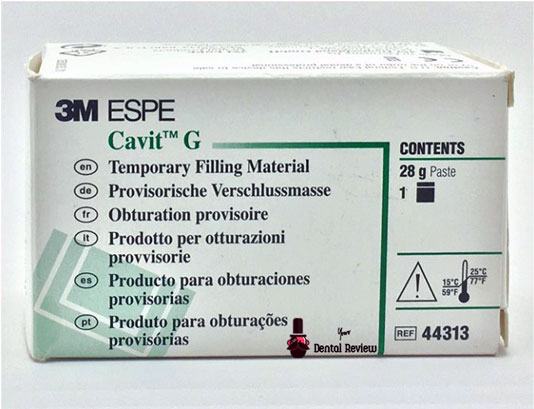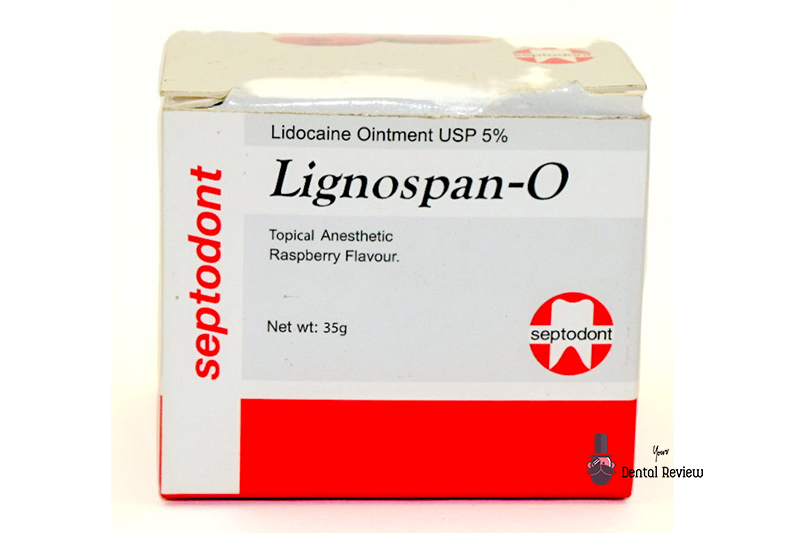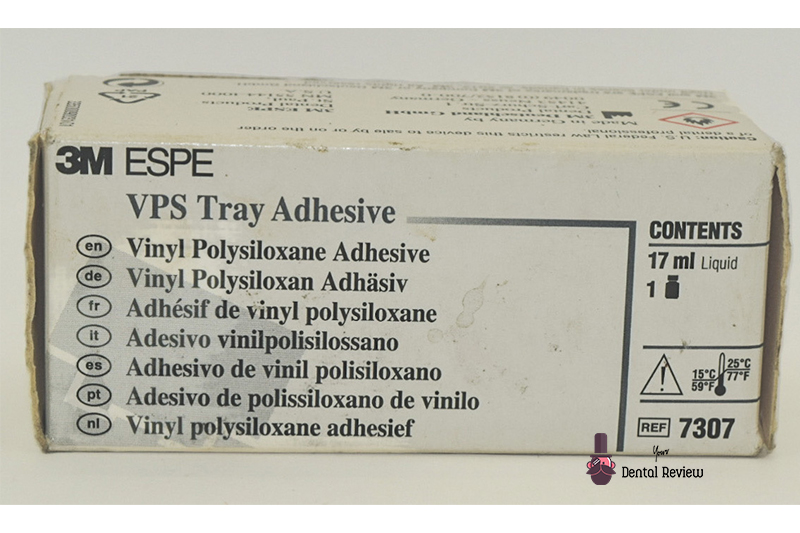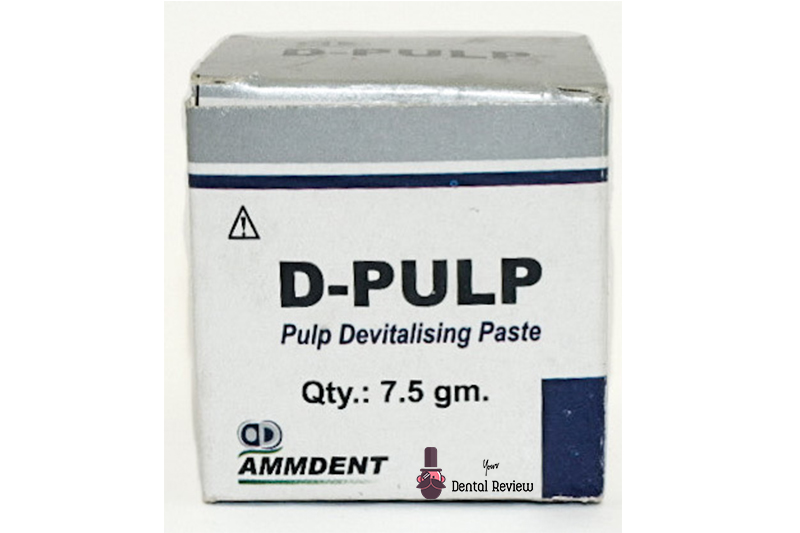Meron glass ionomer luting cement is manufactured by VOCO, a German company.
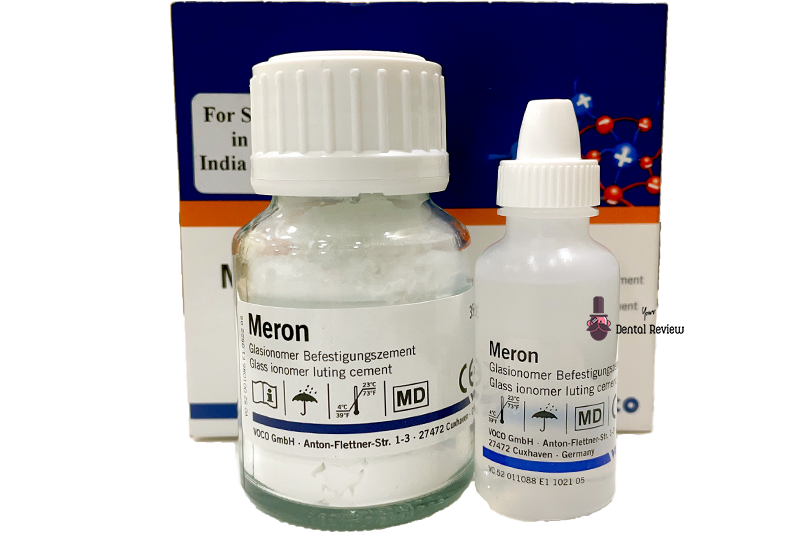
- Meron is available in 3 different forms:
- Meron powder & liquid.
- Capsule
- Aqua meron
- Meron (handmix) is available as a set of
- 35 gm powder
- 15 ml liquid
- Capsule Meron is the machine mixed version to reduce any error in mixing.
- Aqua Meron contains all the active ingredients in the powder with liquid being water.
- Contains fluoride.
- Has low solubility in mouth.
Pros:
- Pulp friendly – Low acidity of Meron (2.5 pH when mixed and reaches 3 pH within 10 minutes) reduces strain on the pulp.
- It has a film thickness of 20 µm. This is just 15 µm in case of capsule version. This allows for correct & accurate seating of the crown, resulting in greater occlusal fit.
- While setting, heat generated is maximum of 37°C. This is a pulp friendly measure too. Though, we should keep in mind that the thin layer of any luting cement doesn’t allow high heat generation anyways.
- Low solubility in the mouth – Solubility is 0.3-0.8% only.
- Compressive strength is an acceptable 110 Mpa. ISO prescribes a minimum of 70 Mpa.
- It is fluoride releasing, which prevents caries. Fluoride release is maximum in the first 24 hours after luting but is also a continuous process.
Indications for Use:
- It is used for luting of
- Crowns & bridges
- Inlays & onlays
- Pins & posts
- Orthodontic bands
Directions for use of Meron:
- The tooth should be cleaned and dried (don’t overdry). Similarly the prosthesis to be luted should also be cleaned and dried.
- Shake the powder before use.
- Take 1 drop of liquid for 1 level scoop of powder (Powder/liquid ratio = 3.0:1 g/g). Dispense the liquid by holding it vertically.
- Use a mixing pad to mix.
- Using a plastic mixing spatula, mix the powder to liquid after dividing the powder into 3 parts and mixing one part at a time.
| Mixing time | 30 seconds |
| Working time | 3 minutes |
| Setting time | 3-5 minutes |
- At the correct creamy consistency, apply the mixed cement to the prosthesis to be luted. It can even be applied to the tooth using a brush.
- The prosthesis is seated properly and allowed to set.
- The excess cement can be removed in the rubbery-elastic stage using a sharp instrument.
- It is essential to prevent contamination with water or saliva during setting.
- The bottles should be closed immediately after use and stored between 4-23 °C.
Review of Meron Glass Ionomer Luting Cement
All the properties of Meron Glass Ionomer Luting Cement make it a good candidate for use as a luting cement. A clinician will hardly change his luting cement unless it is not available in the market or if some issue arises like decementation. I have always used GC Glass Ionomer Luting & Lining Cement (GIC). Adjusting to a new luting cement takes a bit of getting used to.
Same is the situation with Meron Glass Ionomer Luting Cement. Mixing the powder and liquid though similar to other luting cement, takes a little getting used to. I would suggest a few practice runs before actual patient work.
Recommended powder/liquid ration is 1:1. 1 level scoop of powder and 1 drop of liquid may provide enough cement for luting of most of the crowns except a big molar crown where double the quantity should be taken.
It is recommended to remove the excess cement at the rubbery-elastic phase before the complete set. This can be done using a sharp instrument like hand scaler, curette etc.
All in all, a good product for your luting needs.
Please leave your questions or feedback in the comment section below.

